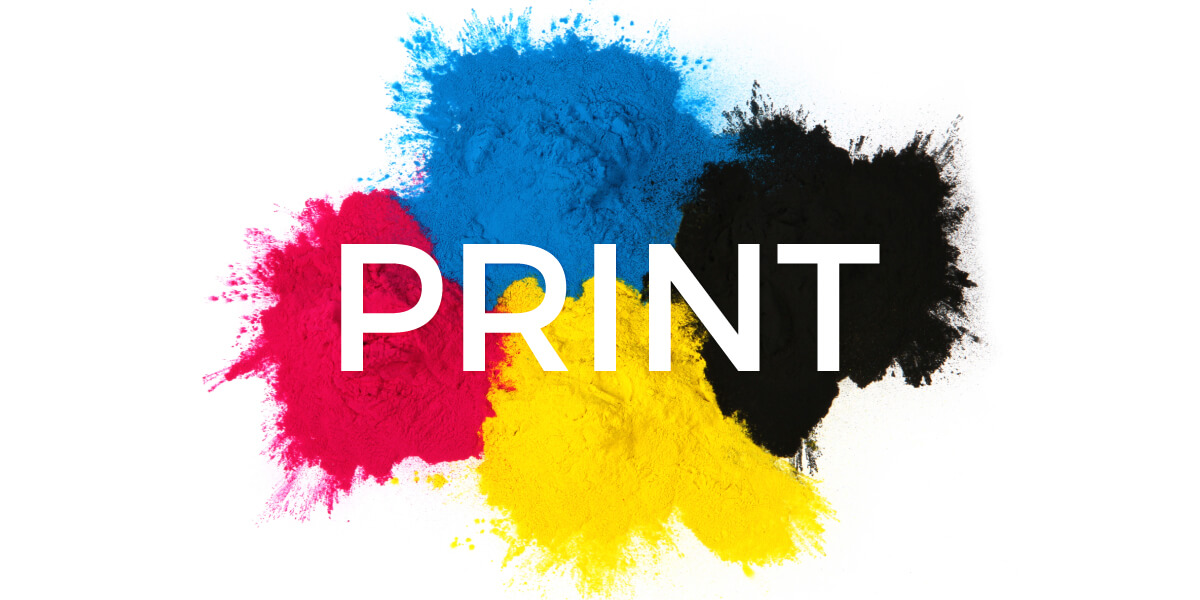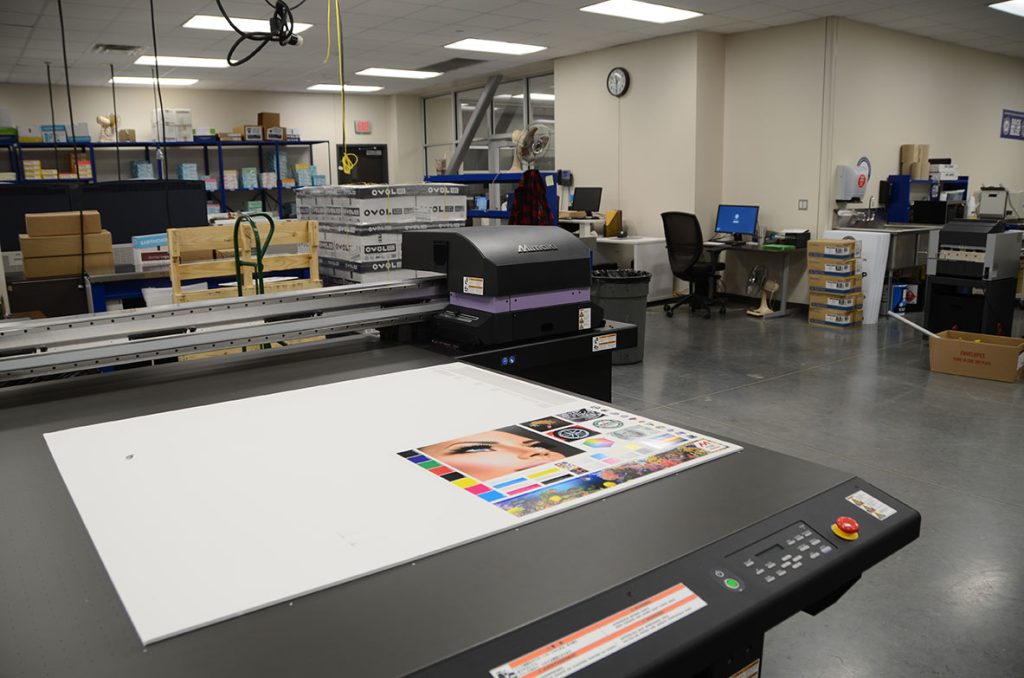7 Surprising Benefits of Using a Print Shop Near Me for Custom Artwork
7 Surprising Benefits of Using a Print Shop Near Me for Custom Artwork
Blog Article
The Ultimate Overview to Making Use Of Printing Services for Custom-made Art Prints
Steering with the world of personalized art prints requires a clear understanding of numerous printing solutions. Musicians should think about aspects such as printing strategies and products to accomplish the wanted end result. Each choice, from art work prep work to shade calibration, plays a crucial role in the final item. As they explore these aspects, musicians can expose the capacity for their work to get in touch with audiences in a purposeful means. What actions can they require to assure their prints stick out?
Comprehending Various Types of Printing Services
Several individuals may neglect the ins and outs of printing services, comprehending the different types available is crucial for anybody looking to develop personalized art prints. The most usual types include electronic printing, counter printing, and screen printing. Digital printing is favored for its quick turnaround and ability to produce high-quality images straight from digital data, making it excellent for little runs. In comparison, offset printing offers superior picture top quality and is economical for larger amounts, making use of plates to move ink onto paper. Screen printing, usually used for textiles and promotional products, involves pushing ink through a mesh screen, enabling dynamic colors and textures. Each technique has its one-of-a-kind benefits and limitations, making it important for artists and developers to examine their certain demands, such as amount, preferred high quality, and budget plan, before picking a printing solution that straightens with their imaginative vision.
Picking the Right Products for Your Prints
Selecting the proper products is necessary for achieving top quality personalized art prints. Recognizing the numerous sorts of paper and the relevance of ink top quality can greatly affect the final result. Artists must think about these factors to ensure their vision is properly stood for in the published item.
Paper Kind Explained
Picking the ideal paper type is essential for achieving the preferred visual and longevity in custom-made art prints. Various alternatives exist, each offering unique attributes. As an example, glossy paper enhances shade vibrancy and detail, making it perfect for photography prints. Alternatively, matte paper supplies a softer finish, which is more effective for artwork that calls for subtlety and structure. Fine art paper, commonly made from cotton or alpha cellulose, supplies archival top quality and is ideal for recreating intricate details in paintings (Print Shop Near Me). In addition, specialty documents, such as watercolor or canvas, can include unique visual effects. Inevitably, choosing the proper paper kind will substantially influence the last discussion, making sure that the art work is both durable and aesthetically enticing
Ink Top Quality Issues
Ink quality plays a vital function in the overall success of customized art prints. High-grade inks assure dynamic colors, sharp information, and longevity, which are essential for showcasing artistic job. When selecting printing services, artists ought to think about pigment-based inks over dye-based alternatives, as they provide far better discolor resistance and shade stability. In addition, the selection of ink need to match the chosen paper type, improving the print's visual influence. Environmental aspects, such as moisture and temperature level, can likewise affect ink efficiency; consequently, musicians must inquire concerning ink solutions that withstand these aspects. Inevitably, spending in premium ink top quality can elevate the last item, guaranteeing that the art print continues to be true to the artist's vision for years to find.
Exploring Printing Methods: Digital vs. Standard
While both electronic and standard printing techniques have their unique benefits, the decision on which method to utilize often depends upon the certain demands of the artwork. Digital printing masters adaptability and speed, permitting fast turnaround times and the capacity to print on need. This approach is particularly valuable for artists that need distinct items or small runs, as it removes the need for substantial arrangement processes.Conversely, standard printing methods, such as lithography and screen printing, commonly create richer shades and appearances, interesting musicians looking for a more authentic and responsive coating. These methods can enhance the depth and high quality of the art work, making them suitable for bigger editions. In addition, standard approaches may use a distinctive visual that digital printing sometimes struggles to reproduce. Inevitably, the selection between these methods need to take into consideration factors like wanted quality, quantity, and creative intent, assisting artists to one of the most suitable option for their tasks.

Preparing Your Art Work for Printing
Successfully preparing artwork for printing calls for mindful focus to information, no matter the chosen printing strategy. Musicians should ensure that their data are produced at the ideal resolution, typically 300 DPI, to keep sharpness and clearness. The correct shade setting, generally CMYK for print, is vital to accomplish the desired color accuracy. Musicians need to likewise consider the measurements of the artwork, ensuring to include bleed areas if required, to avoid any type of unwanted white sides after trimming.Additionally, documents formats play a crucial role; TIFF and PDF are frequently favored for premium prints. Before submission, it is very important to evaluate the artwork for any blemishes or undesirable components. By meticulously checking these aspects, artists can improve the chance of their prints straightening with their creative vision, eventually bring about an effective printing end result.
The Importance of Shade Calibration and Proofing
Color calibration and proofing are vital action in the printing procedure, as they assure that the final result properly mirrors the artist's vision. Correct shade calibration warranties that the colors presented on the screen match those that will be published. This procedure entails adjusting the monitor setups, printer profiles, and inks to attain a constant shade representation.Additionally, proofing permits musicians to sneak peek their work prior to the final print run. This stage allows them to find and remedy any discrepancies in saturation, detail, or color, thereby minimizing expensive mistakes. By making use of electronic or hard-copy evidence, artists can make educated choices regarding changes needed for excellent results.Incorporating color calibration and proofing right into the printing process not just enhances the high quality of the end product however additionally fosters a reputable partnership between the printing and the musician solution, assuring fulfillment and fidelity to the initial artwork.
Choosing the Perfect Size and Style for Your Prints

Advertising and Selling Your Custom-made Art Prints
Marketing and offering custom art prints needs a strong brand name identity to stick out in a competitive market. Efficient on-line promotion approaches and the tactical use social media platforms can significantly boost visibility and interaction. By incorporating these elements, artists can produce a compelling existence that attracts potential buyers.
Building Your Brand Name Identification
Establishing a strong brand name identification is vital for artists wanting to efficiently market and market their personalized art prints. This identification incorporates the artist's special design, values, and story, which reverberate with potential purchasers. Musicians need to develop a natural visual presence throughout all systems, consisting of logo designs, color design, and typography that reflect their imaginative vision. Additionally, a clear objective statement helps connect the musician's function and passion. Engaging narration regarding the inspiration behind each piece can foster psychological links with the target market. Uniformity in messaging, whether on social media sites or packaging, improves acknowledgment and trust. By meticulously curating their brand identity, artists can distinguish themselves in an open market, bring in dedicated consumers who value their artistry.
Reliable Online Promo Approaches
What techniques can artists employ to successfully advertise their personalized art publishes online? Creating a specialist website showcasing the art work is important. This website ought to include high-grade images and thorough summaries to engage prospective purchasers. Furthermore, musicians can use email advertising by developing a client listing to share updates, promos, and new releases. Teaming up with blog writers and influencers in the art community can increase reach and credibility. Providing exclusive pieces or limited-time discount rates can additionally create seriousness, motivating acquisitions. Maximizing content for search engines via appropriate key words will enhance presence. Preserving a blog site concerning the artistic procedure can draw in art lovers, cultivating a deeper connection with the audience and enhancing the total marketing technique.
Using Social Media Site Platforms
Social media platforms offer as effective tools for musicians aiming to market and sell their custom art prints. By leveraging platforms like Instagram, Facebook, and Pinterest, see this here artists can display their work to a large audience. Engaging visuals and tactical hashtags can enhance visibility, drawing potential buyers to their profiles. On a regular basis publishing content, such as new styles or behind-the-scenes procedures, aids keep target market interest and fosters a feeling of area. In addition, artists can use targeted advertising and marketing to get to certain demographics, improving the chances of sales. Collaborations with influencers or various other musicians can additionally enhance exposure. Inevitably, a well-curated social media sites presence not only advertises custom art prints yet likewise builds a devoted consumer base in time.
Frequently Asked Inquiries

Exactly how Do I Find Reliable Printing Expert?
To discover reliable printing service providers, one need to investigate online evaluations, seek recommendations from peers, contrast portfolios, demand samples, and assess customer care responsiveness. This extensive approach assurances informed choices and acceptable outcomes.
What Is the Regular Turnaround Time for Custom Prints?
The typical turnaround time for customized prints differs by service provider, however usually ranges from a few days to two weeks. Elements affecting this consist of order size, complexity, and the certain printing methods made use of.
Can I Obtain a Refund if I'm Not Pleased With My Prints?
The concern of acquiring a reimbursement for unacceptable prints commonly depends on the specific printing service's policies. Numerous firms offer contentment warranties, while others might have strict return conditions, highlighting the relevance of assessing terms ahead of time.
Exist Any Kind Of Hidden Prices Related To Printing Services?
Many printing services may include hidden expenses such as arrangement charges, delivery fees, or extra fees for certain products. It's essential for clients to ask regarding all prospective costs before settling their order.
Just How Can I Guarantee My Prints Are Eco Pleasant?
To ensure prints are environmentally friendly, one must pick eco-friendly inks, recycled paper, and lasting printing techniques. Investigating printing services that focus on sustainability and acquiring accreditations can even more assure marginal ecological impact in the printing procedure. Guiding through the globe of personalized art prints needs visit the site a clear understanding of numerous printing solutions. Numerous people might neglect the intricacies of printing solutions, understanding the various kinds available is essential for any person looking to produce personalized art prints. The most typical types consist of digital printing, counter printing, and screen printing. Effectively preparing artwork for printing calls for careful focus to detail, no matter of the chosen printing method. Prints intended at galleries may call for common sizes to assist in framework, whereas distinct layouts may appeal to collection agencies looking for something distinctive.Lastly, the printing service's capacities need to be evaluated.
Report this page